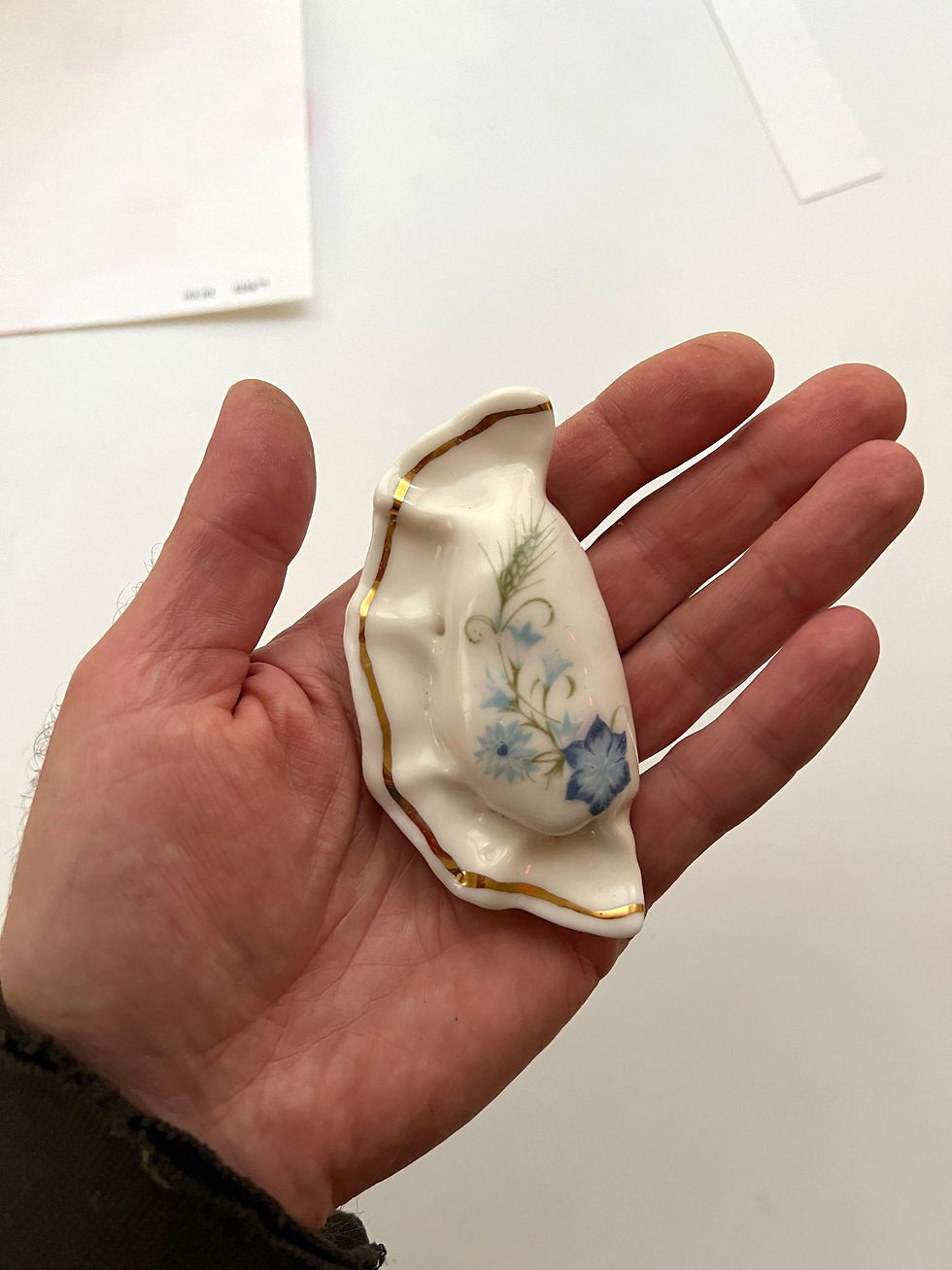Polish Specialties
- Paweł Żołyński

- Jun 11, 2023
- 3 min read
Updated: Mar 3, 2025

Chainsaw's Self Portrait, Applewood, 2014.
A chainsaw made with chainsaw. The chainsaw became a model for itself. It is as if a tool was creating itself.
Photo Robert Duke Duczkowski
What is very important to me is questioning the commonly accepted ideas about the condition and nature of everyday objects, food, tools, as well as of animals. By tweaking the form and replacing the materials I can say something surprising which would have never been told otherwise. It's a game with the viewer that can bring unexpected results, make someone think differently for a moment or even change his mindset. By placing my work in an unusual context, I can challenge and alter peoples' views and social habits.
I’d like to think that great ideas are just floating in the air, and all you have to do is to find a way to reach out for them. Intriguing concepts, humor, absurdity, and banality are my medium.
Beside the idea itself, craftsmanship plays a vital role in my practice.
Olga Szulc: Why sculpture?
Paweł Żołyński: Because it's a spatial form.
Because it's the third dimension that painting, which I love and practice, doesn't have.
Because it's the broadest concept among visual arts (excluding film).
Because you can touch and interact with the sculpture.
Because it's something difficult and often misunderstood.
Because sculpture can be experienced through multiple senses.
Because sculpture offers infinite possibilities while requiring extraordinary craftsmanship.
Because it's a space where I can explore the strangest subjects, where ideas, wit and surprise matter, and where the inexplicable hides.
Sculptures, for me, speak an entirely different language. A good sculpture has beauty and strength. It's something that’s known from everyday life, but is transformed into something new.
Sculpture is the creation of a new tangible reality.
Cured Ham
Ready-made. Boxing Gloves, Meat Hooks, Ceramic Tiles

The artwork represents used, worn-out boxing gloves as if they were hams in a traditional butcher shop.
I've dealt with boxing and martial arts for many years, and the changing room after training is like a steamy smokehouse. In ham, like in gloves, there is a lot of effort and pain preserved. People rarely think of meat like this while enjoying it. They see the finished product, evaluate its appearance, then taste it. They do not think about the history behind the product in their pantry. Here we are, looking at the cluster of hams hanging on the butcher’s shop wall; when we come closer, they turn out to be the boxing gloves.
Photo Paweł Żołyński
Black Pudding
Dimensions: Height: 12 cm, Width: 16 cm, Depth: 28 cm

Terrazzo Black Pudding is inspired by everyday life.
When I walked on the stairs, floors, and screeds made of terrazzo, when I looked at all those stones embedded in concrete that recall the times of communism, it reminded me of black pudding slices. Since it is already such a ready-made "black pudding", all you must do is give it a proper shape.
Photo Kevin Demaria
Head Cheese
Dimensions: Height: 16 cm, Width: 20 cm, Depth: 22 cm

Continuation of the Black Pudding idea.
Terrazzo, in the times of communism in Poland, was a consequence of poverty and unification. This type of terrazzo flooring reminded me of the head cheese slices, often served by my mother instead of the much more expensive and rarely available cold cuts. The head cheese was a substitute for something much more desirable - like in architecture, cheap terrazzo replaced premium materials, which were costly and inaccessible. Again, it’s just one step to transfer this material to art.
Photo Kevin Demaria
White Sausage

There is a traditional Polish sausage called white sausage. As in the case of Black Pudding
(terrazzo shaped like a sausage), gypsum - the most common modelling material - became White Sausage. the perfect justification for making a sculpture out of plaster.
Photo Kevin Demaria
Pierogi
Size: approx. 10 x 5 x 2,5 cm each. Glazed porcelain, decal, gold luster.

Part of the Polish Specialties series, Porcelain Pierogi are a tribute to Polish tradition and the most recognizable Polish food. The process of making Pierogi is almost identical to preparing the actual dish.
Photo Kevin Demaria

Photo Paweł Żołyński
Making Chainsaw with Chainsaw

Paweł Żołyński is an artist. He graduated from the Academy of Fine Arts in Wrocław. In 2003, he obtained a master's degree diploma in sculpture from Professor Leon Podsiadły studio. Since 2001 he has exhibited in many solo and collective shows in Poland, Netherlands, and New York City.
Since the beginning of his studies, he has been creating works using various sculptural and painting techniques, such as stone, wood, metal, stucco/terrazzo, molding techniques, ceramics, ready-made, oil painting, and acrylics. In sculpture, he is mainly interested in banality, formal issues, postmodernism, critical art, pop art, installation, performance, and happening. He also presents his films and animations at of independent films in Poland and abroad.
He lives and works in Ellenville, NY.




Comments